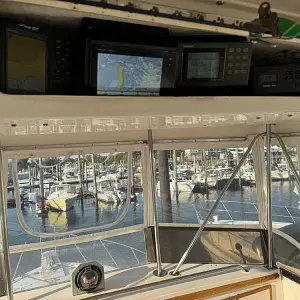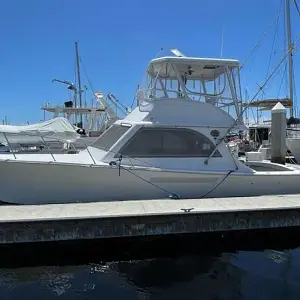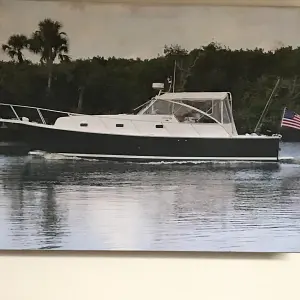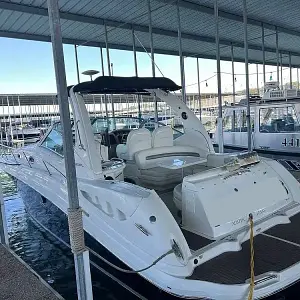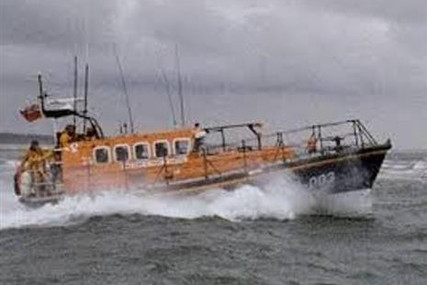We have two very recently retired Mersey Class lifeboats for sale so in excellently maintained condition after just coming out of service.boat last refit Novemberboat last refit June 2014General Information
FURTHER DETAILED INVENTORY WILL BE AVAILABLE SHORTLY
All-weather Year introduced to the RNLI fleet:
1988 Last built:
1993 Launch type:
Carriage, slipway or afloat Crew:
6 Survivor capacity:
We have two very recently retired Mersey Class lifeboats for sale so in excellently maintained condition after just coming out of service.boat last refit Novemberboat last refit June 2014General Information
FURTHER DETAILED INVENTORY WILL BE AVAILABLE SHORTLY
All-weather Year introduced to the RNLI fleet:
1988 Last built:
1993 Launch type:
Carriage, slipway or afloat Crew:
6 Survivor capacity:
Self-righting – 21 Non self-righting – 43 Maximum speed:
17 knots Range / endurance: 240 nautical miles Length:
11.62m Beam / width:
4m Draught / depth:
1.02m Displacement / weight:
14.3 tonnes (maximum) Fuel capacity:
1,110 litres Engines:
2 x Caterpillar 3208T marine diesel engines; 280hp each at 2,800rpm Steering positions:
2 – an elevated upper steering position for 360º views and one inside the wheelhouse Construction:
Aluminium or fibre-reinforced composite (FRC) Number in fleet:
26 at stations and 5 in the relief fleet Identification
All lifeboats have a unique identification number. The first part indicates the class. Mersey class lifeboats start with 12 because they are almost 12m in length. The numbers after the dash refer to the build number. So the first Mersey built was given the number 12-001. A build number with three digits indicates a hull constructed of aluminium. Two digits indicate a hull constructed of fibre-reinforced composite (FRC). Communications and navigation
Includes: VHF (very high frequency) and MF (medium frequency) radio with digital selective calling (DSC) VHF direction finder (DF) global positioning system (GPS) with electronic chart system radar
Hull Structure
The Mersey Class FCB has a 10
metre waterline length hull,
manufactured from FRC with
inherent self-righting capability.
All hull fittings, machinery and
electrical fittings, appliances,
tools etc., are well secured by a
combination of nuts, bolts,
drop-nose pins and shock
cords to retain them in place
should a knockdown or capsize
occur.
The hull exterior has a soft
nosed bow with reverse sheer. A spray rail protects the deck and wheelhouse from thrown
spray when travelling at speed. A good working space is provided on the foredeck; the
reverse sheer allows clear vision over the stern when the bow rises at speed.
A fairly low freeboard permits the recovery of survivors from the water while giving enough
height in the bow for good seakeeping. The hull has a round bilge and a semi-displacement
form, with a tunnel stern and radiused transom.
The keel has hauling shoes forward and aft which have ruffle holes to allow beach or
slipway launch / recovery.
The FRC boats have closed-cell rigid polyurethane foam buoyancy under the anchor in the
fore peak and in the fore cabin sole.
Adjustable trim tabs are fitted to either side of the centreline, under the stern and below
the waterline in order to adjust the trim of the lifeboat to suit varying sea conditions, these
are controlled independently from the wheelhouse helmsman's console and a parallel set
of controls on the upper steering position instrument console.
The hull is subdivided by four watertight bulkheads in five compartments.
1) Fore Peak Cable Locker
2) Fore (Survivors) Cabin
3) Engine Room
4) Oil Fuel tank Space / wheelhouse
5) Aft Peak Steering Gear Compartment
The rudders are twin semi-balanced spade type and propellers are four-bladed cast Nickel,
Aluminium, Brass (NAB) The propeller shafts are fitted with Spurs type rope cutters.
Disclaimer
Disclaimer
customContactInformation
alan@mgmboats.com Mobile
